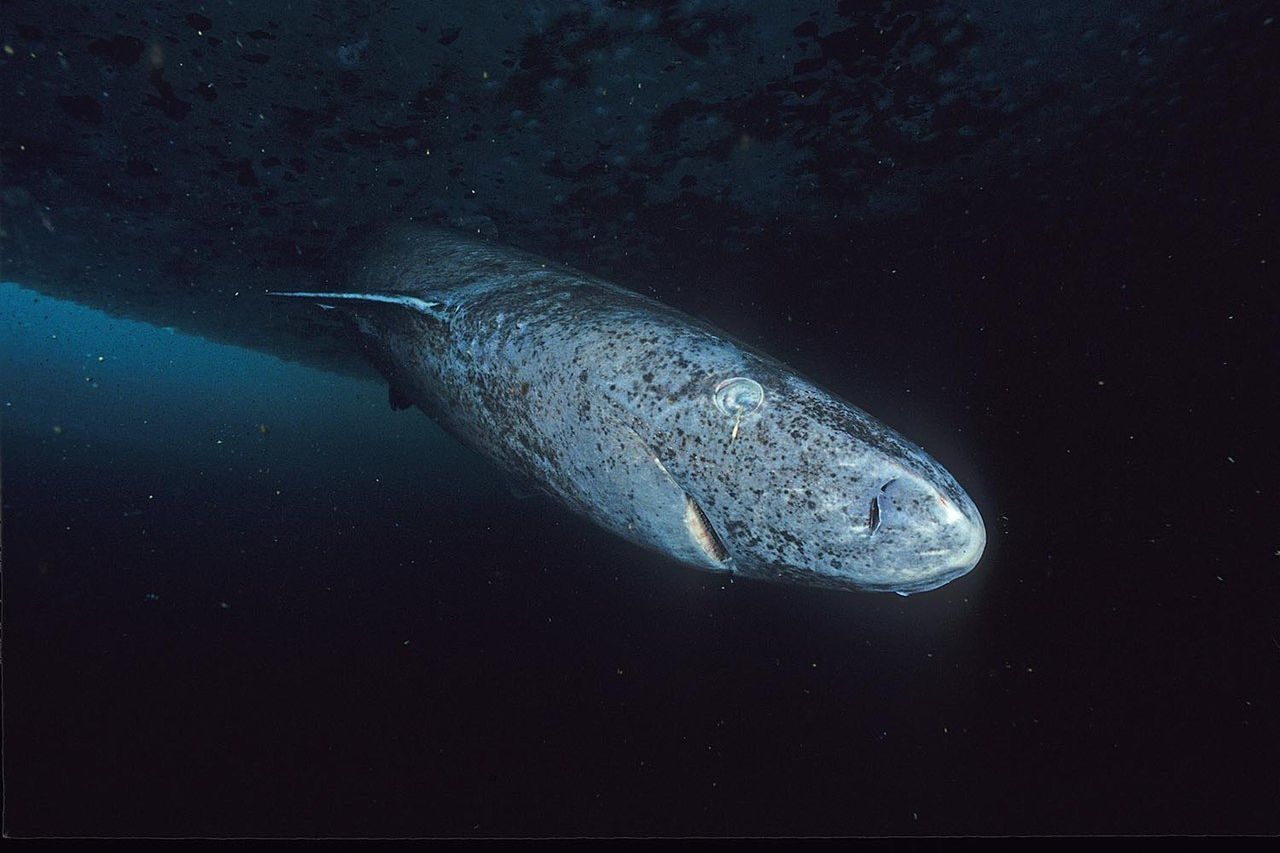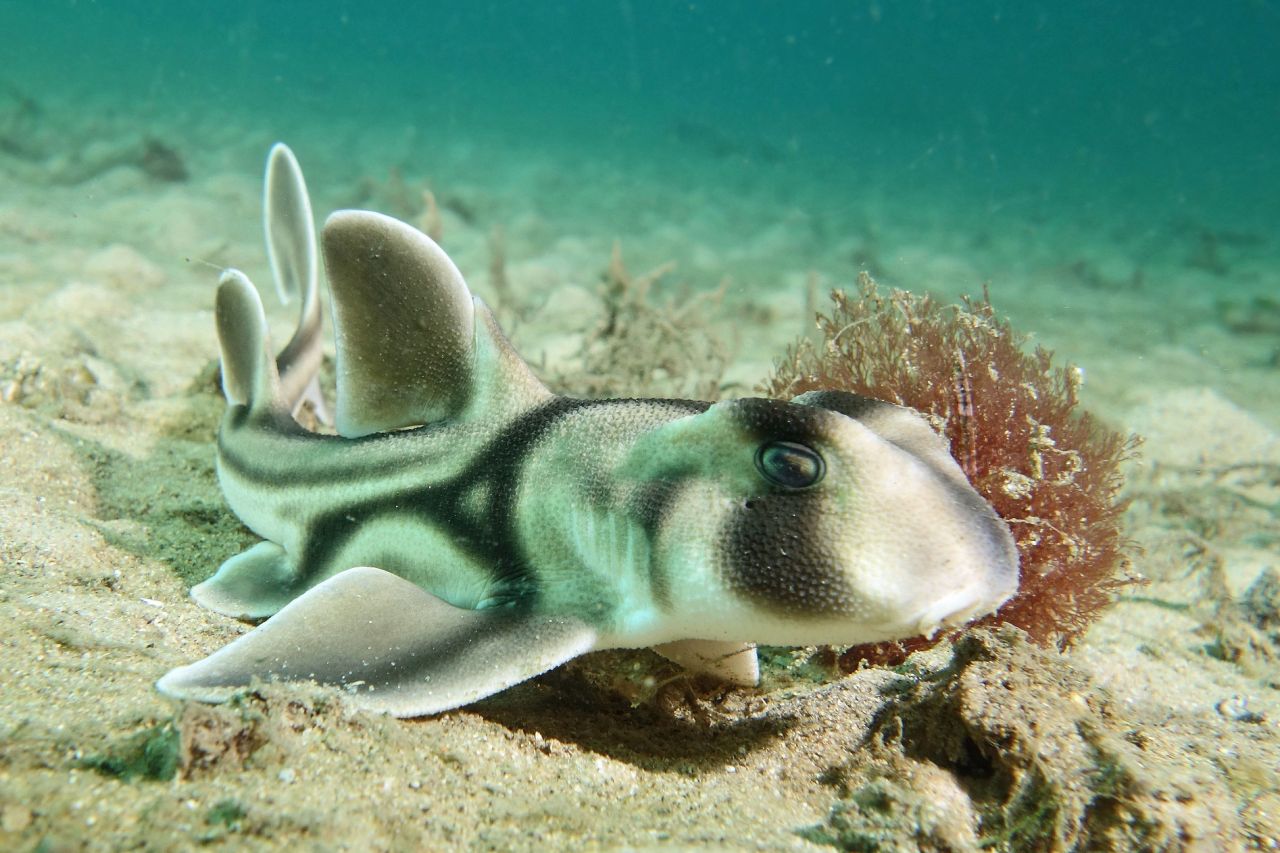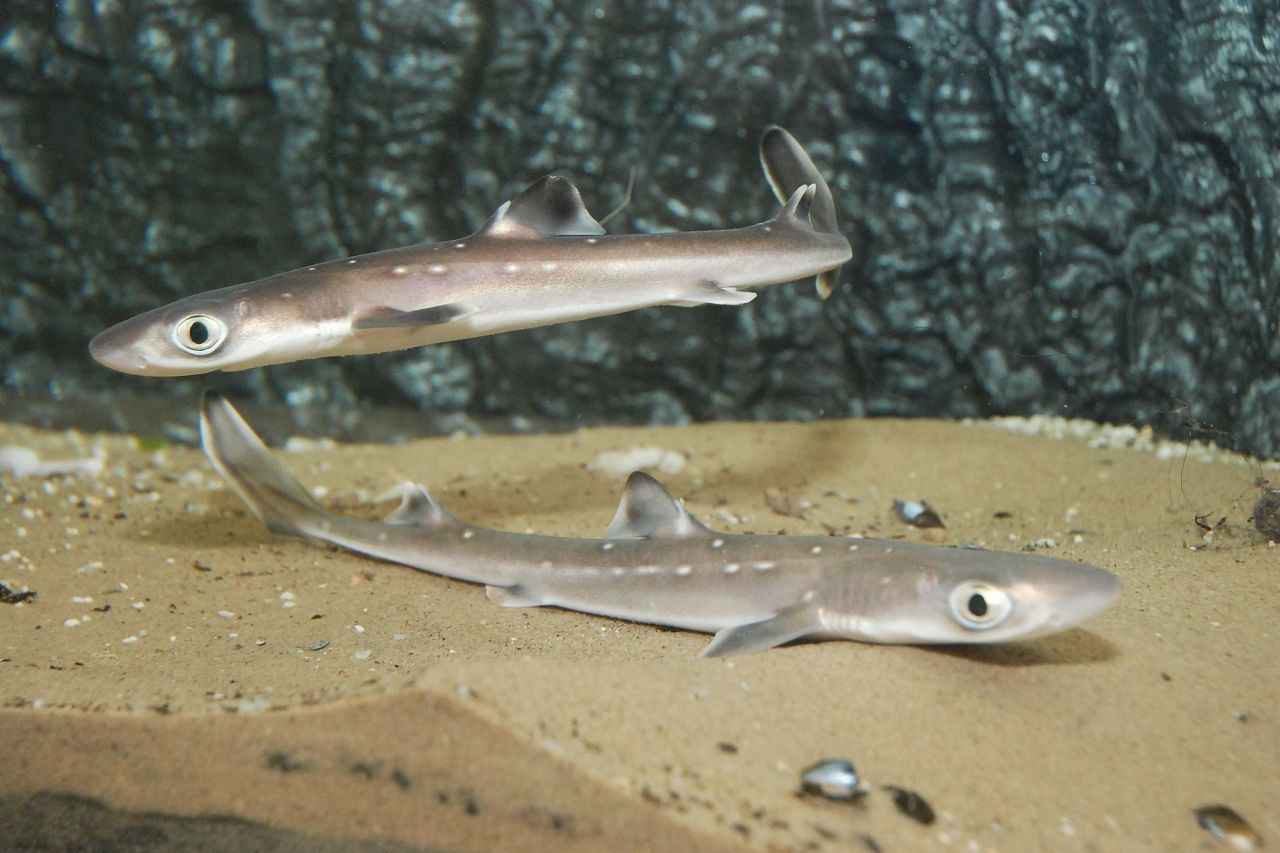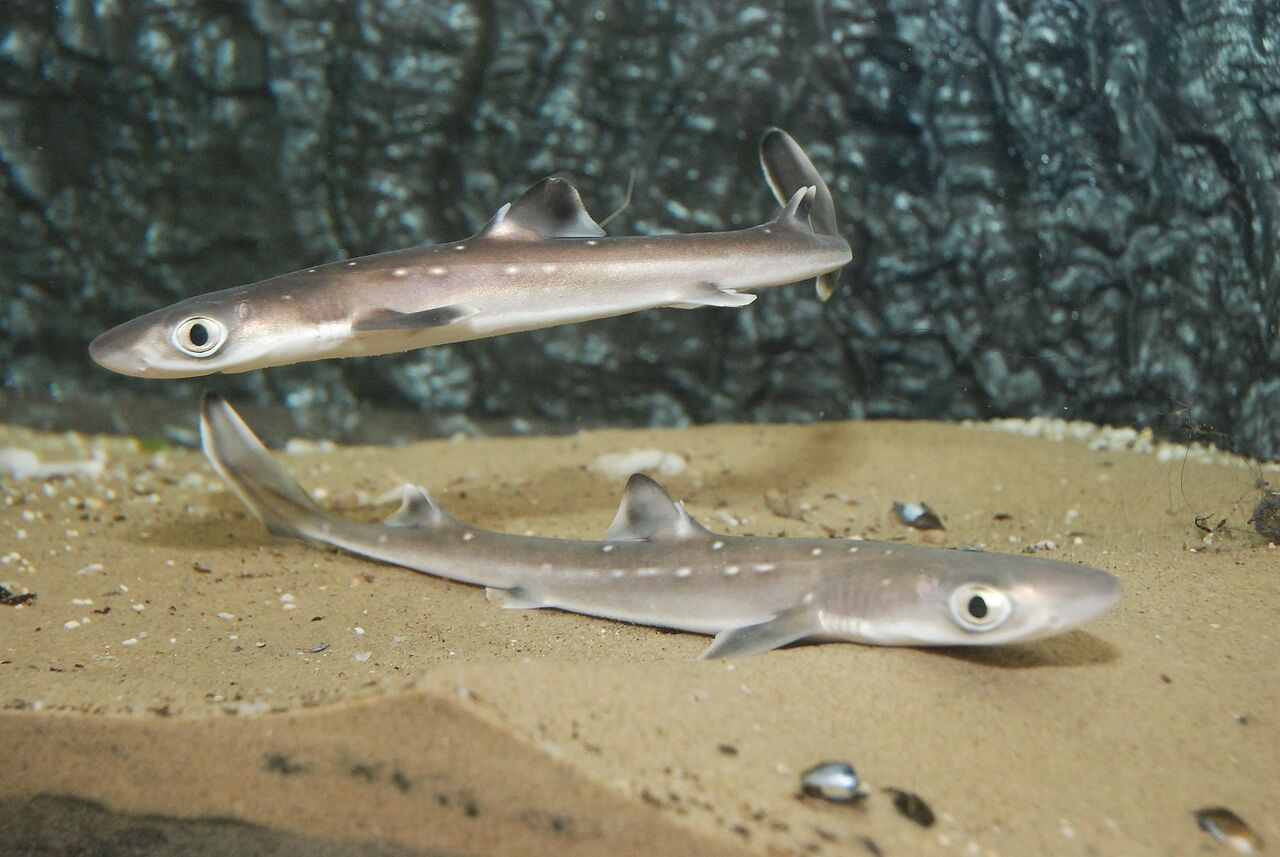Many people believe that sharks can't sleep because they die if they aren't constantly moving. We've already dispelled the myth that sharks can't remain still, but what about sleep?
The answer is... maybe. Sharks definitely rest. They definitely "space-out". But, it's not clear if this is actually "sleep”, which is a reduced state of consciousness, or simply periods of reduced physical activity.

In a recent study in two species of buccal pumping sharks (that is, sharks that are able to breathe while remaining still), small electrical pulses were applied to their surrounding water while the sharks were in their motionless "restful" state which does superficially resemble sleep. Both the Port Jackson and draughtboard sharks used in this study were shown to respond to these electrical signals while actively swimming, but stronger pulses needed to be used before they were noticed by the "restful" sharks. This reduced state of awareness is a strong indicator that these sharks actually are asleep - i.e. in a diminished state of awareness, rather than just remaining still which would not have dulled their sensitivity.

In 2016, a great white shark, one of the few species that actually does need to keep moving to avoid death, was observed seemingly asleep with her mouth wide open facing into the current. This footage, captured by the Discovery Channel while filming near Mexico’s Baja Peninsula, appears to show the shark in a completely catatonic state, with a fairly weak swimming behaviour that many speculate is an automatic way for it to keep getting oxygen while it rests. Similar behaviours have also been observed of great white sharks resting in gullies in False Bay.
In support of the above behaviour in great whites, some studies have shown that sharks' swimming muscles are regulated by their spinal cord, not directly by their brain, so it's possible that sharks covering long distances could "sleep" while they swim. All vertebrates possess bundles of nerves called “central pattern generators” - basically the nerves that regulate rhythmic movements like swallowing, breathing and walking. A study of spiny dogfish revealed that these sharks have them in their spinal cords. This is possibly an adaptation that allows sharks to keep swimming while their brains rest, or possibly sleep.







